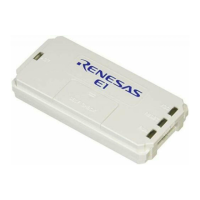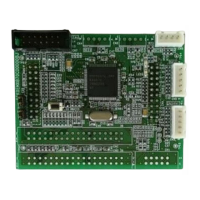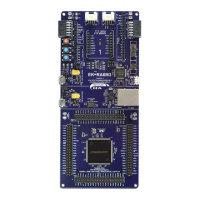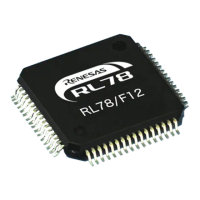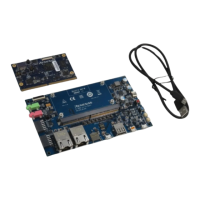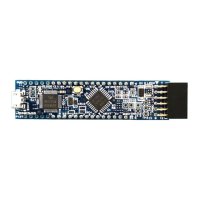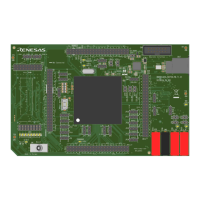1-10
1
OVERVIEW
32180 Group User’s Manual (Rev.1.0)
1.3 Pin Functions
Table 1.3.1 Description of Pin Functions (2/5)
Type Pin Name Signal Name Input/Output Description
Data bus DB0–DB15 Data bus Input/output This 16-bit data bus is used to connect external devices.
When writing in byte units during a write cycle, the output
data at the invalid byte position is undefined. During a
read cycle, data on the entire 16-bit bus is always read in.
However, only the data at the valid byte position is
transferred into the internal circuit.
Bus control CS0#–CS3# Chip select Output These are chip select signals for external devices.
RD# Read Output This signal is output when reading an external device.
WR# Write Output This signal is output when writing to an external device.
BHW#/BLW# Byte high/low write Output When writing to an external device, this signal indicates the
valid byte position to which data is transferred. BHW# and
BLW# correspond to the upper address side (bits 0–7 are
valid) and the lower address side (bits 8–15 are valid),
respectively.
BHE# Byte high enable Output During an external device access, this signal indicates that
the high-order data (bits 0–7) is valid.
BLE# Byte low enable Output During an external device access, this signal indicates that
the low-order data (bits 8–15) is valid.
WAIT# Wait Input When accessing an external device, a low-level input on
WAIT# pin extends the wait cycle.
HREQ# Hold request Input This input is used by an external device to request control
of the external bus. A low-level input on HREQ# pin places
the CPU in a hold state.
HACK# Hold acknowledge Output This signal notifies that the CPU has entered a hold state
and relinquished control of the external bus.
Multijunction TIN0–TIN33 Timer input Input Input pins for the multijunction timer.
timer TO0–TO44 Timer output Output Output pins for the multijunction timer.
TCLK0 Timer clock Input Clock input pins for the multijunction timer.
–TCLK3
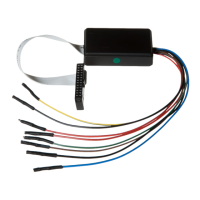
